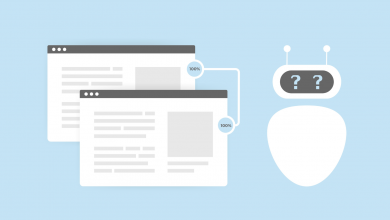What does Norway’s meta feature ads ban mean?
The battle over user privacy continued this week as Meta was ordered to stop feature advertising in Norway.
Meta received the order on July 14 from the Norwegian Data Protection Authority.
The order states that Meta will no longer be able to serve personalized behavioral ads to users on Facebook and Instagram. The ban will begin on August 4 and last for three months.
Let’s dive into the ban itself and what it means for advertisers – now and in the future.
Meta personalized ads ban background
In an earlier ruling on July 4, the European Court of Justice ruled that Meta was “unlawfully collecting people’s data without their express consent and to target ads based on the company’s ‘legitimate interest’.”
In addition to the EU decision, Meta is also being investigated by the Irish Data Protection Commission for similar advertising practices.
In January 2023, Meta fined them $410 million for what they believed was a violation of European consumer privacy. That particular investigation is still ongoing, as Meta is appealing the decision.
As Ireland’s privacy regulator manages compliance with the General Data Protection Regulation (GDPR) for all of Europe, countries in that region have up to three months to make their own decisions.
Norway became the first country to impose such a ban on Meta this week amid ongoing investigations.
Blocking of feature ads explained.
On the surface, it looks like Meta won’t be able to deliver personalized ads to users.
As an advertiser, that kind of news is enough to keep you up at night.
However, when we take a closer look at the restraining order, it still explains the implications of acceptance and disobedience.
As of 2011 ordering, Facebook and Instagram can still serve customized ads based on the “About” section of a user’s profile. Because a user provided that information voluntarily, that does not violate the no-consent policies.
Meta can still run contextually targeted ads that aren’t based on tracking users.
If Meta is found to be in breach of the rules at any time, they face a hefty fine of NOK 1 million per day. This equates to approximately US$99,495.
The order gives the option for the ban to be lifted – but only if Meta finds and proves a new way to legally process personal data under the GDPR. Users must be allowed to opt out of targeted ads based on tracking.
The advertising implications of the ban
So does this mean that advertisers who want to reach the Norwegian public can’t use Facebook or Instagram ads?
Not at all.
However, there are a few possible consequences of the ban:
- Users will still see ads, but perhaps more frequently.
- Ads that users see and engage with will be less relevant.
- Advertisers CPMs may be inflated due to targeting restrictions.
While these are just speculations, these scenarios are not far-fetched.
If companies pause or opt out of the Meta ad platform during the ban, that means less competition. Less competition can result in the same ads being shown to the user over and over again. as a result:
- High ad frequency and CPM
- Ads will be less relevant to users
Small businesses can be especially affected if meta ads are the main business driver. They may need to reorient their paid media strategy without a targeting mechanic to use to avoid losing business.
On the other hand, Facebook may decide to serve ads as usual based on the amount of ad revenue it receives. You can view the ~$95,000 per day penalty as a minimum cost to maintain the revenue level.
In conclusion
Metadata collection and privacy practices will be under the microscope for the next few months, if not more.
Although Norway is the first country to issue such an order, others are likely to follow suit. There are currently no reports of other countries announcing similar bans.
These decisions and bans could set the stage for other mandatory changes in the complex and ever-changing privacy regulations.
We will keep you updated as more developments come.
Featured Image: Evan Mark / Shutterstock



